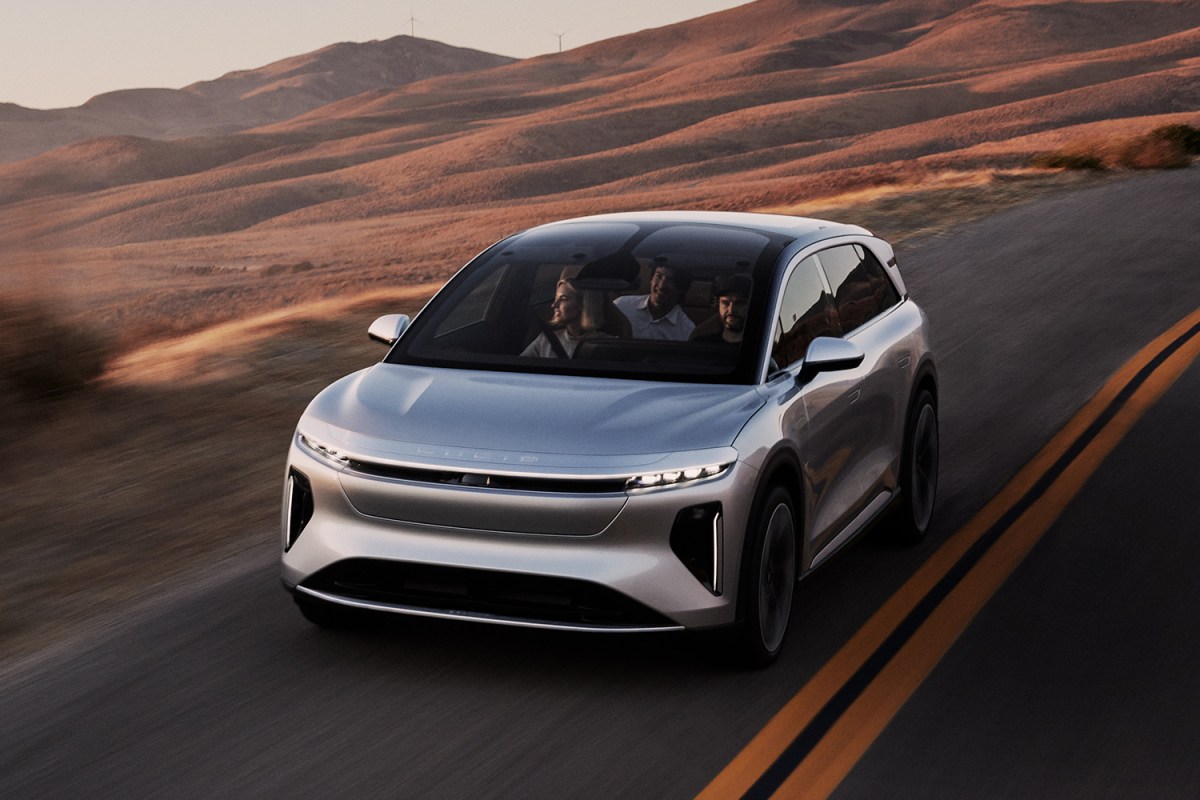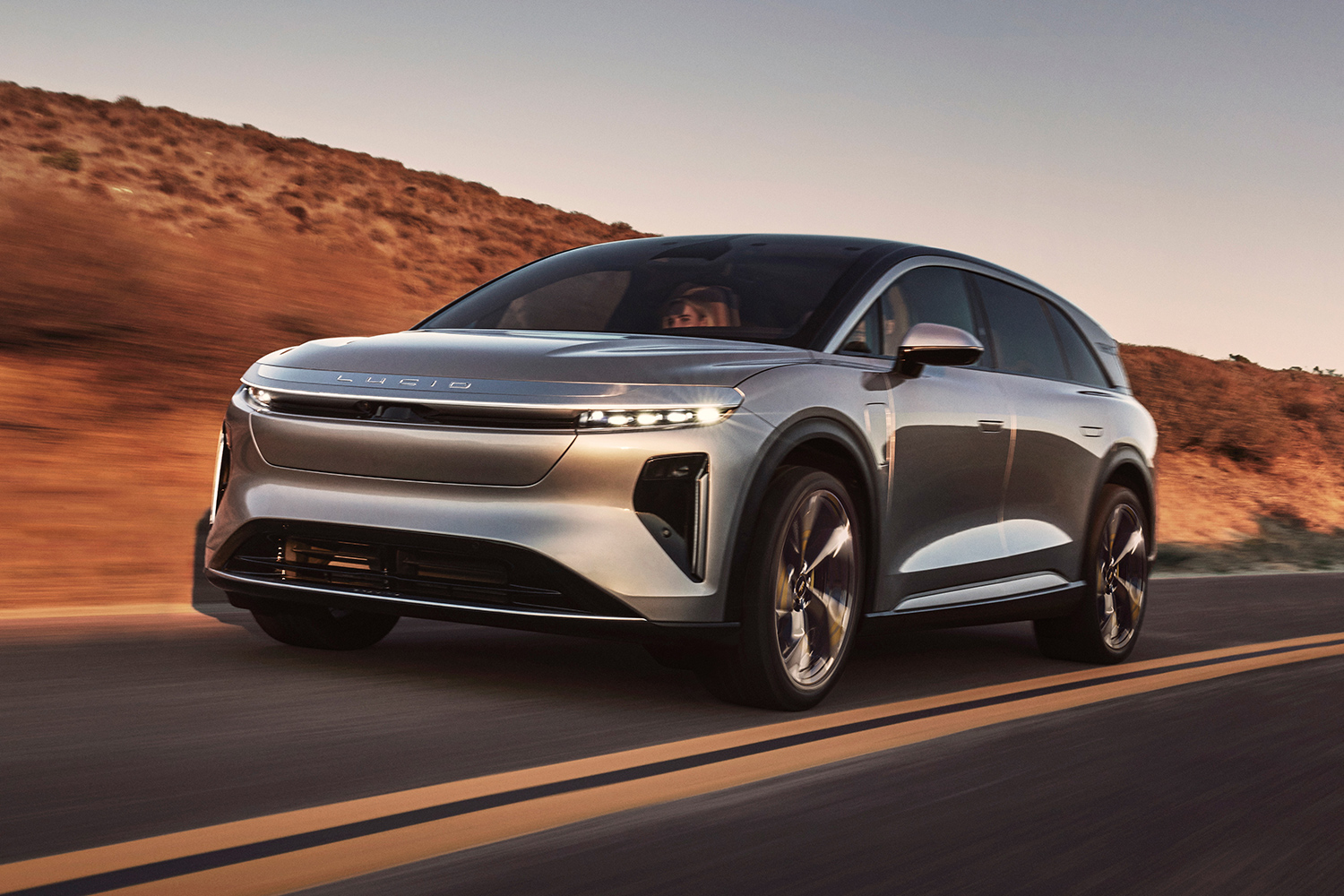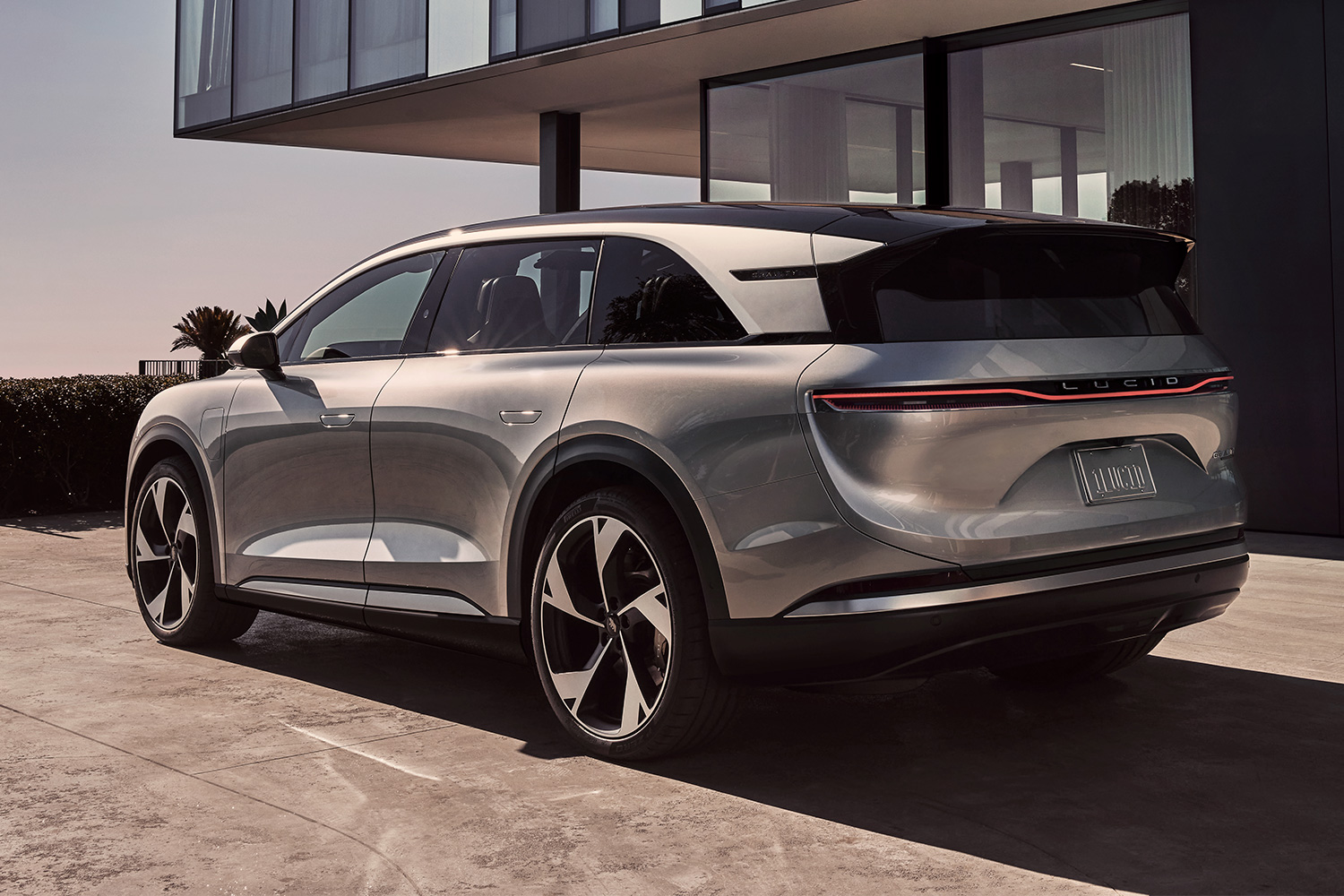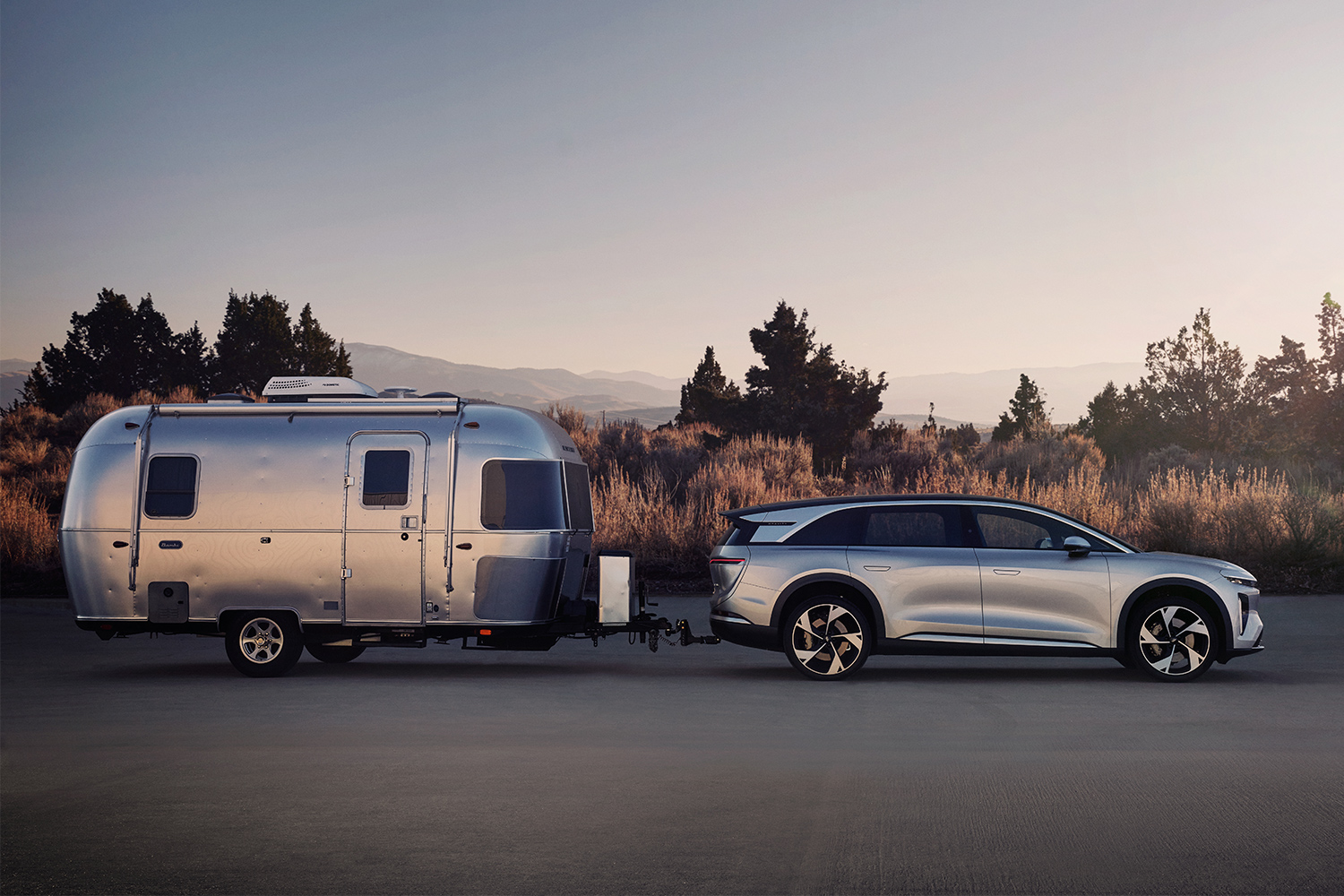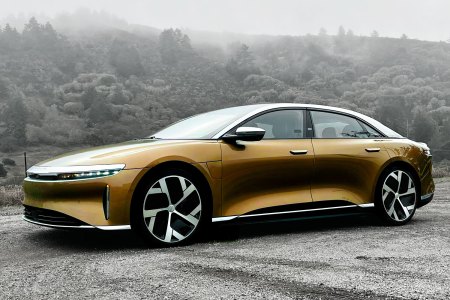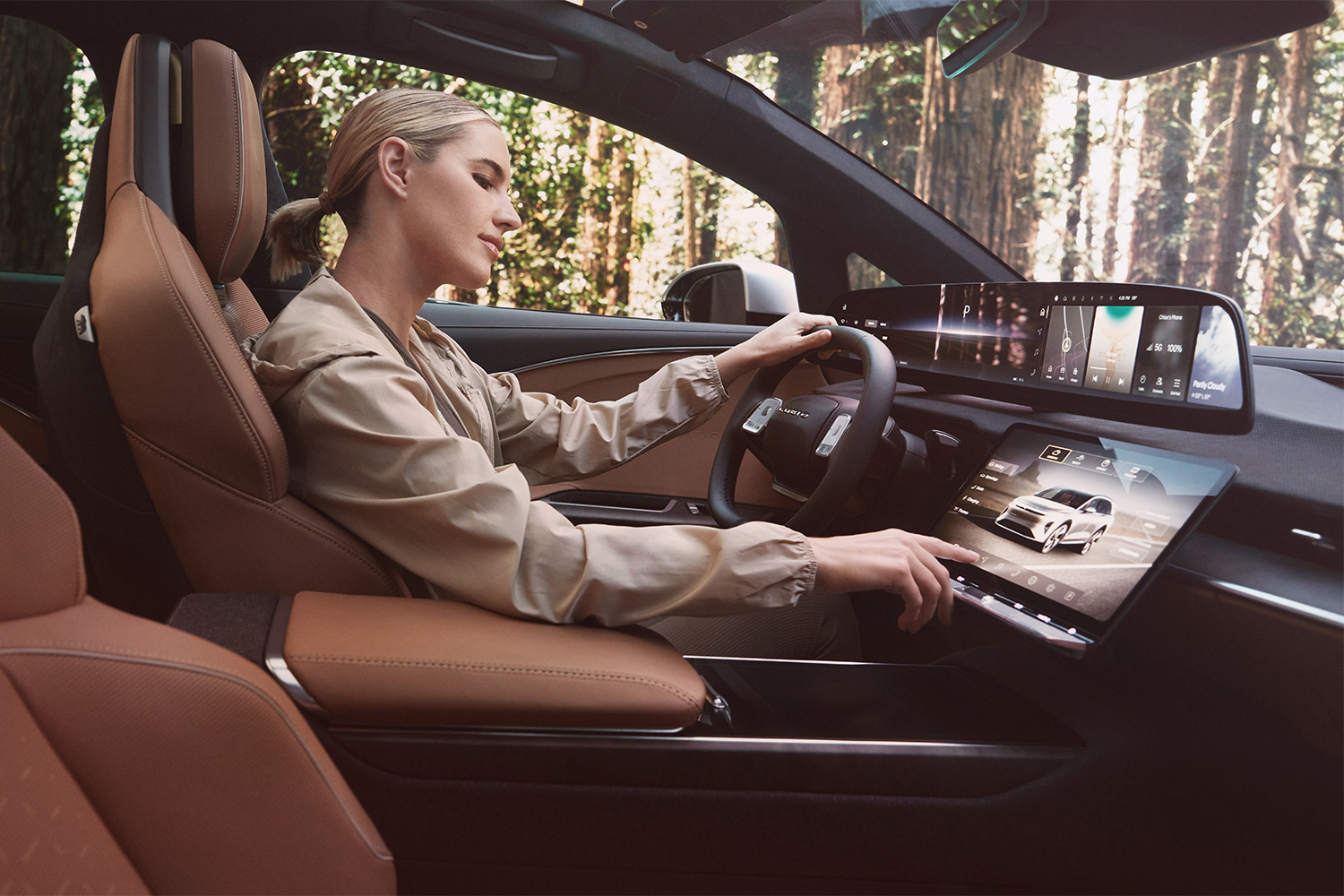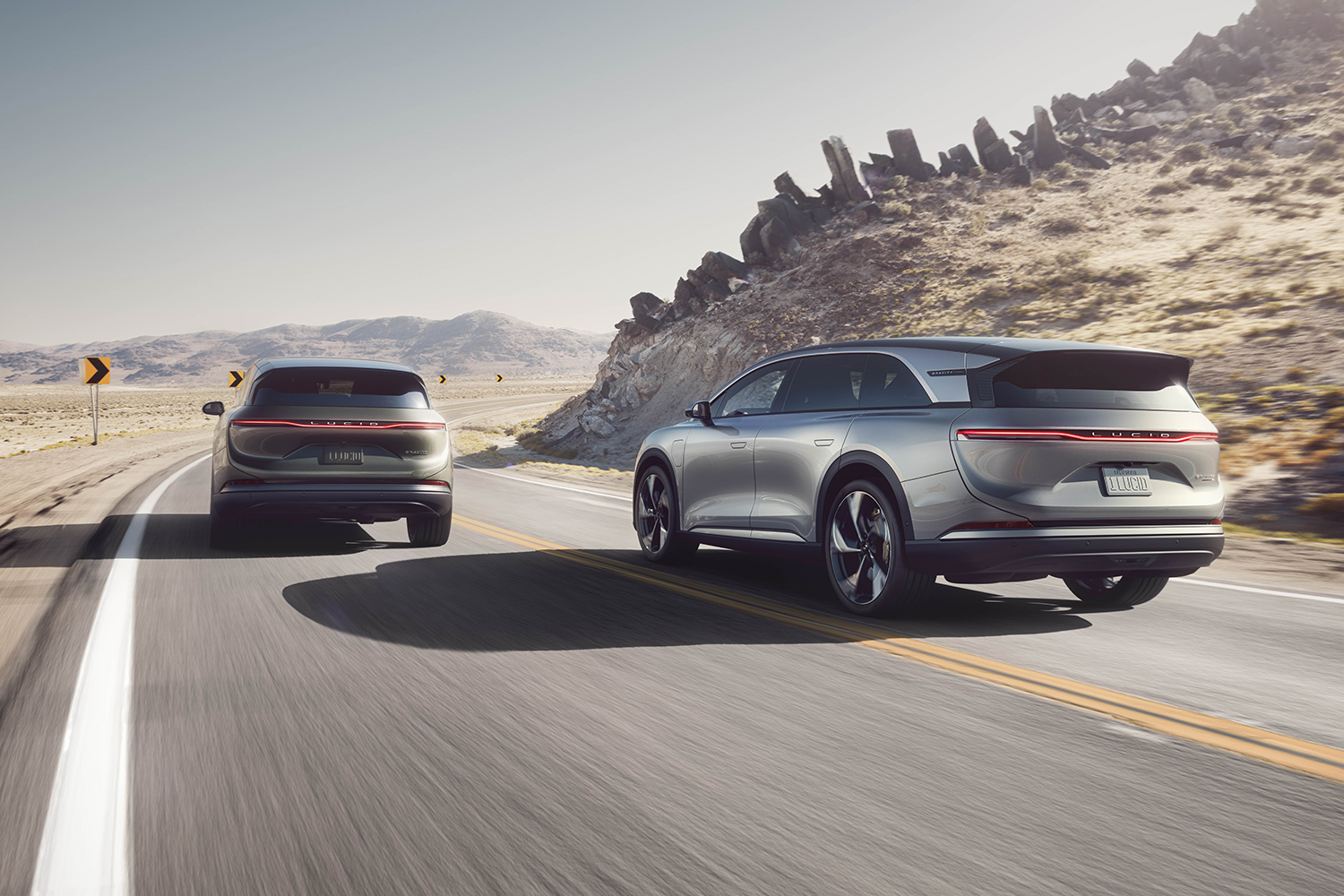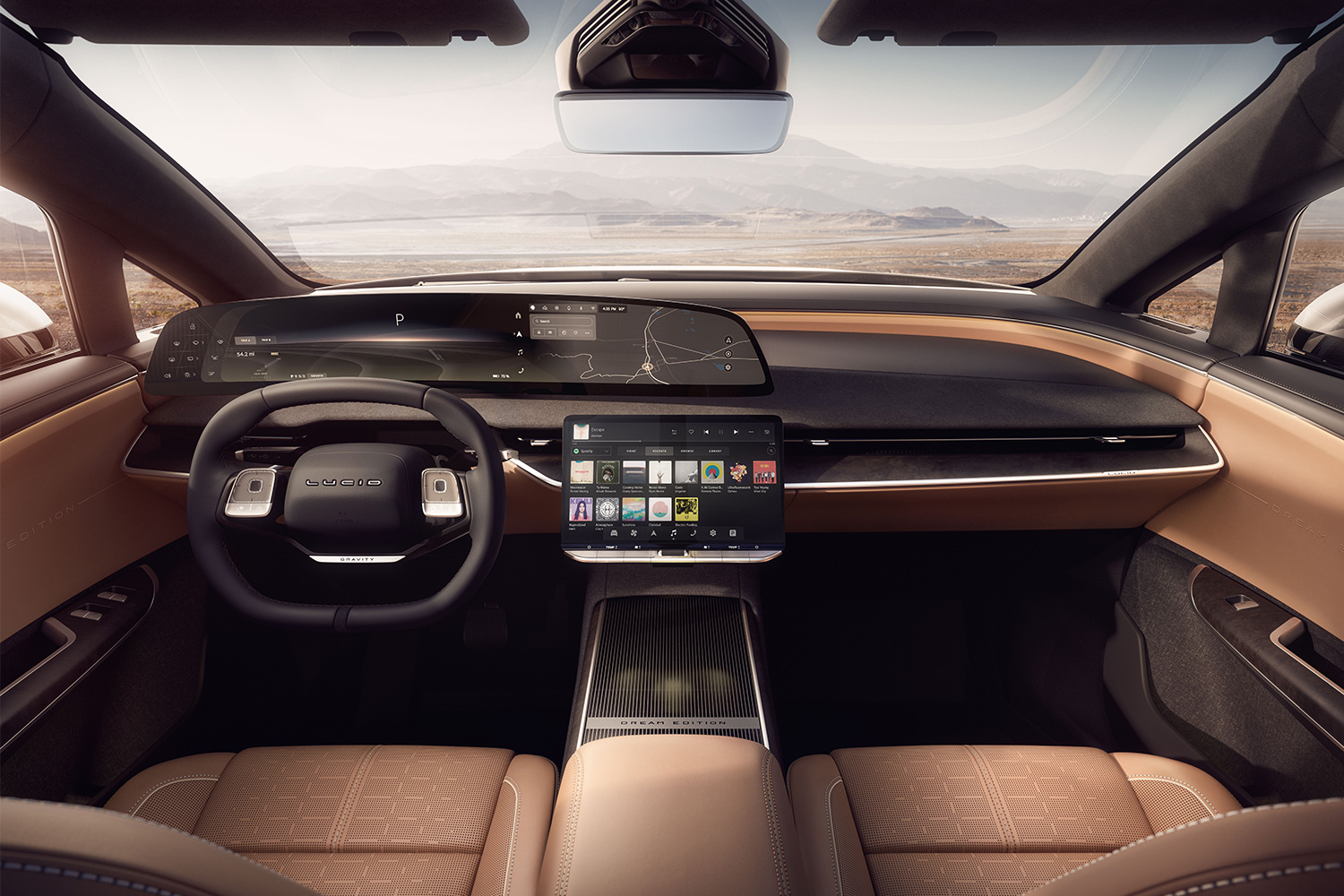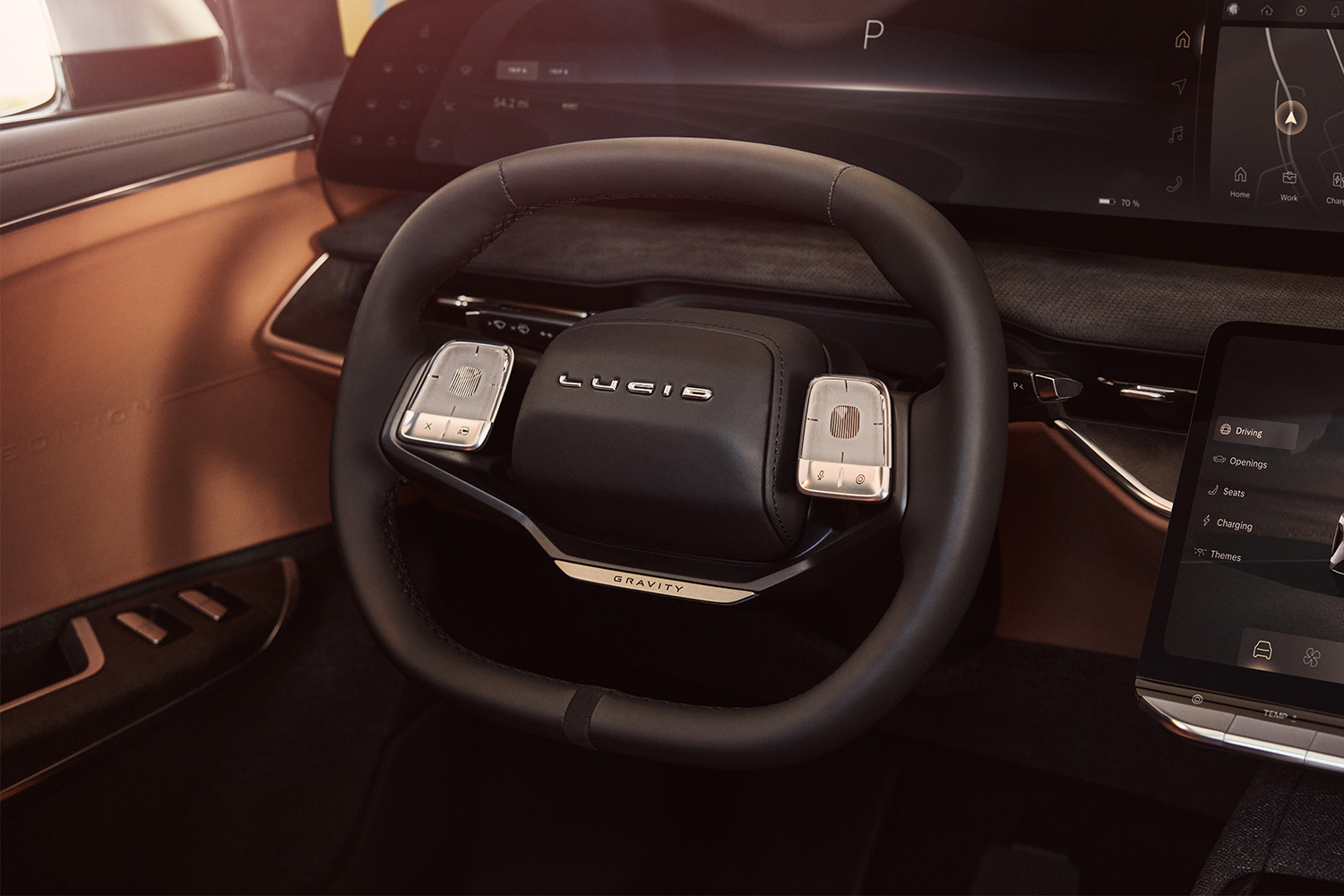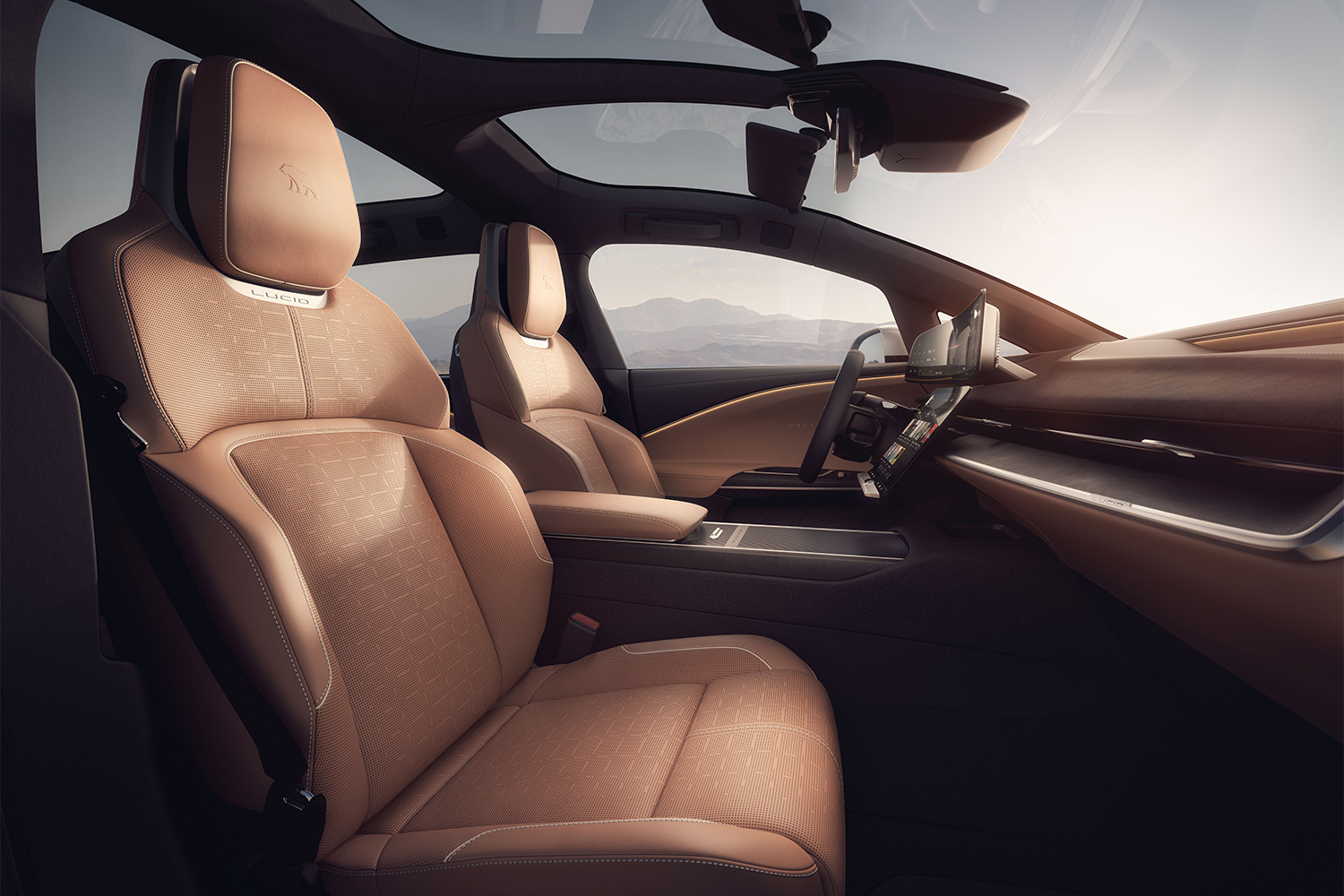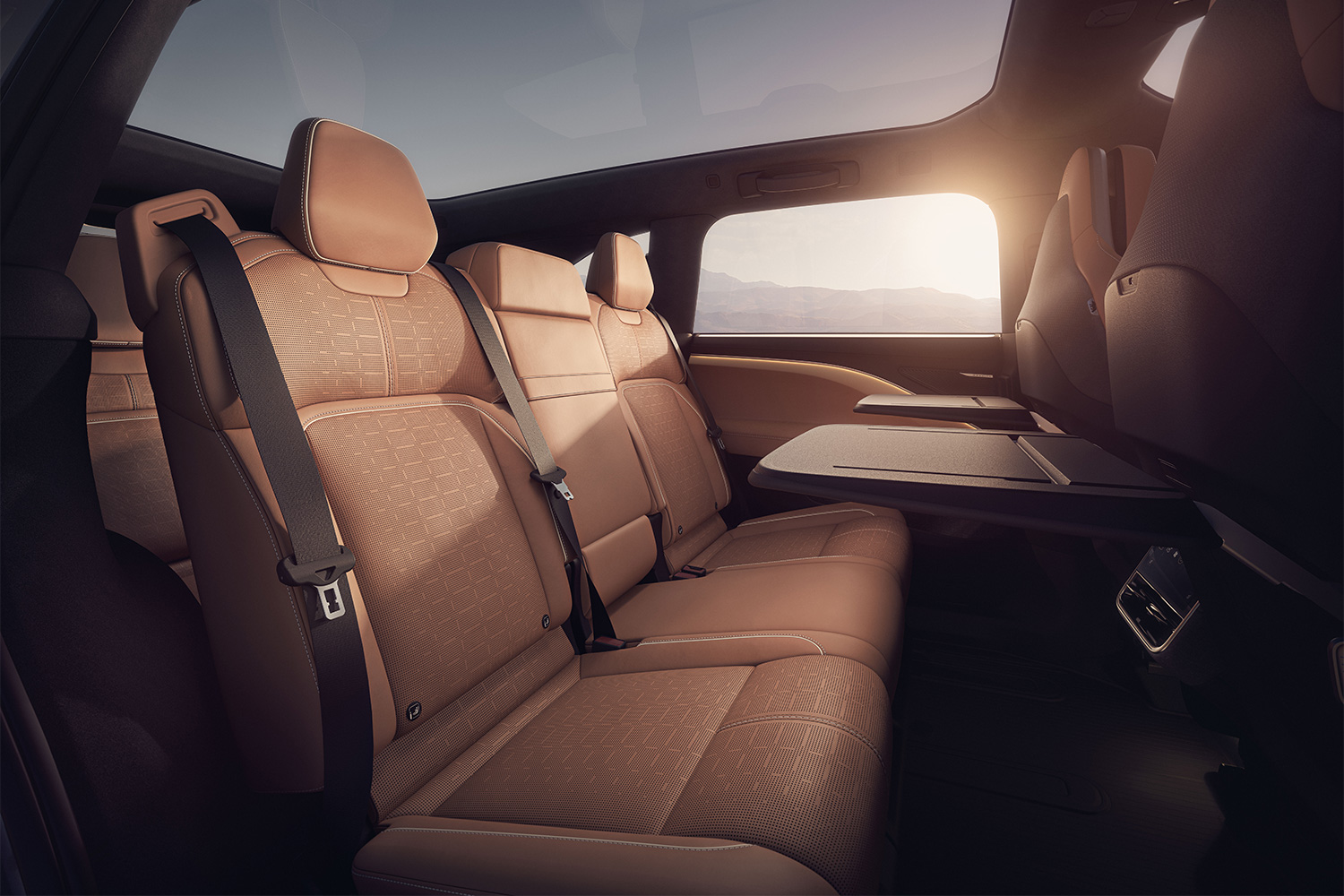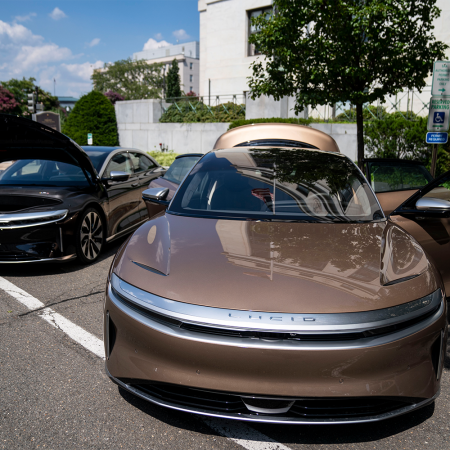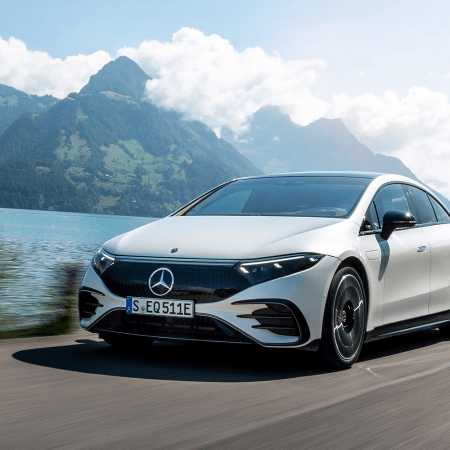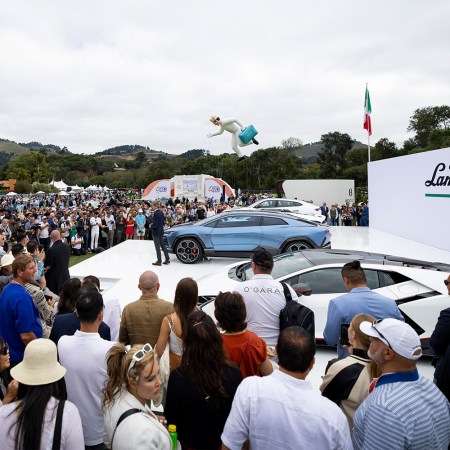Despite its headline-grabbing, record-breaking 520 miles of range and 1,000-plus horsepower, the debut of the electric Lucid Air in 2021 felt like more of a curveball than a home run. Why would an electric vehicle startup launch its first product as a sedan when that style of vehicle now seems to be the exception, not the rule?
Lucid recently doubled down on the genre with the outrageous Sapphire, but a quarter-million-dollar hot rod sedan does not a car company make, as last quarter’s grim financial results showed the company lost $227,802 for every car they sold during that period. Though gearheads are (rightly) geeking out over the Sapphire’s performance, the cold reality of Lucid’s future depends on boosting sales volume by joining the segment that’s responsible for 80% of U.S. sales: SUVs and trucks.
Today, the EV company finally entered that lucrative market by unveiling the long-awaited Lucid Gravity SUV. I got the chance to see it in person at a private preview before today’s official announcement. Here’s what I found.
Lucid Gravity: Pricing, Range and Key Features
Before diving into the nitty-gritty, let’s cover the basics of the Lucid Gravity.
Though the Lucid Air was introduced with the top-of-the-line Dream Edition, packing a heady 1,111 horsepower and costing a dizzying $170,500, the company is trying the opposite approach with their SUV. The Gravity joins the lineup with entry-level positioning and a price point that is estimated to fall under $80,000 (final pricing will be determined closer to production and delivery, which is slated for late 2024). That would put it on par with the base 2024 Air Pure sedan, which is priced at $77,400, plus destination fees.
The Lucid Gravity will utilize a similar 900-volt platform as the Air, but features improved battery chemistry that enables slightly smaller battery packs with comparable range. Precise range numbers are still dependent on future official EPA ratings, but Lucid estimates “in excess of 440 miles” for the top model. Given that the current entry level Air Pure rear-wheel drive sedan can run 419 miles without a recharge, I’m anticipating less than that figure for the most attainable Gravity since its heavier weight and reduced aerodynamic efficiency will inevitably limit its range. The top Gravity model also offers acceleration from 0 to 60 mph in less than 3.5 seconds, and an impressive 1,500 pounds of payload and 6,000 pounds of towing capacity.
Is the Lucid Air Worth the Hype?
Our writer contemplates our EV future — while going 0 to 60 in 2.6 secondsThanks to a longer wheelbase and taller passenger compartment, the Gravity brings a spacious cabin with available three-row seating for seven; a stowable third row of seats can fold flat to enable more than 112 cubic feet of cargo space. Unlike many third-row solutions, Gravity’s packaging enables decent third-row legroom for adults, while those in the second row get integrated tray tables.
Adding to its utility is a front trunk with a power outlet and an optional, folding seat pad that encourages tailgate party hangs. Eric Bach, Lucid chief engineer and senior vice president of product, said the power outlet is strong enough to run a Nespresso machine or hairdryer; given the open-air party possibilities, I’m thinking a portable fridge for cold beverages might work, too.
The Importance of Aerodynamics
At the private, hands-on preview, I wasn’t quite sure what to expect from the brand’s first SUV, but I braced myself for a swollen, higher-riding version of the Air. After laying eyes on the Gravity for the first time, the family resemblance is still certainly there — particularly the front headlamp assembly which sweeps across the nose, and the way the roofline tapers at the C-pillar to meet a relatively flat beltline.
But there are several elaborations on the original theme that lend the new design more dimensionality, among them a more sculptural treatment to the doors that makes the Gravity look shapelier, and a rear section that’s scooped inward which lends it a lighter, more dynamic look. In contrast to the ultra-slippery Air which has an aerodynamic drag coefficient of .197, Gravity is expected to come in under .24 — which is pretty impressive given its size and height.
While it still retains some of the key visual elements of the Air, the Gravity comes across with its own identity, one that moves the design language of the brand forward and helps anticipate inevitable future products (like a pickup truck) as well as updates that will be made to the big sedan.
Feels Like a Porsche, Coddles Like a Cadillac
Dropping battery packs below the floorboard is a well-established practice in EV design that frees up the interior for space, which is ideal for an SUV designed to haul more people and stuff than the next vehicle. That said, Derek Jenkins, Lucid senior vice president of brand and design, is quick to point out that certain big electric SUVs have embraced a more-is-more approach to size, to the detriment of efficiency and driving ease.
“We studied a taller [roofline], but that would cut into efficiency,” Jenkins told InsideHook. “We kept it lightweight and sustainable,” he added. “Doubling the size and making it heavier would not be the Lucid way.” To that point, Eric Bach suggested that Gravity “feels like a [Porsche] Macan, but is almost like an [Audi] Q7 on the outside and a [Cadillac] Escalade on the inside.”
While I wasn’t able to drive the Gravity to confirm or deny those comparisons, Lucid’s new SUV does indeed feel spacious on the inside, with supple Nappa leather seats paired with high-quality trim that includes a neat embossed Ultrasuede material across the dashboard panel. Though the instrument screen resembles the unit in the Air, the curved panel has been stretched to 34 inches with taller edges and is now one continuous OLED display, versus the Air’s LED unit that combines three separate screens. For a bit of benchmarking, the Cadillac Escalade incorporates a sprawling 38-inch OLED into its larger cabin. The center console features a so-called “Pilot Panel” screen like the Air, along with the beloved “Touch Blade” with physical controls for volume, climate control and fan settings in order to avoid fiddling with the touchscreen.
Updates to the interface include a central wireless charging pad that accommodates two smartphones, and a steering wheel with twin haptic touchpads which are an evolution of the Air’s dual toggles. Topping the cabin is a similar glass roof design that’s implemented in the Air, though Lucid brass suggests subsequent models may come with a fixed roof, a la the Air Pure.
While the Gravity show car I experienced appeared to be decked out with loads of optional goodies, the fit, finish and appearance of the entry-level model remains to be seen. From what I’ve experienced with the base model Air, I anticipate the lower priced Gravity to be a competently and competitively finished model that will attract those who don’t need monster power or state-crossing range.
We’ll report back on the full Gravity experience with driving impressions as soon as we can score seat time in advance of its showroom debut in late 2024. As a brand whose proprietary motor and battery technology has set the pace for the industry, Lucid’s Gravity is a long overdue and welcome addition to the brand’s lineup that should help propel the nameplate into the future.
This article was featured in the InsideHook newsletter. Sign up now.
